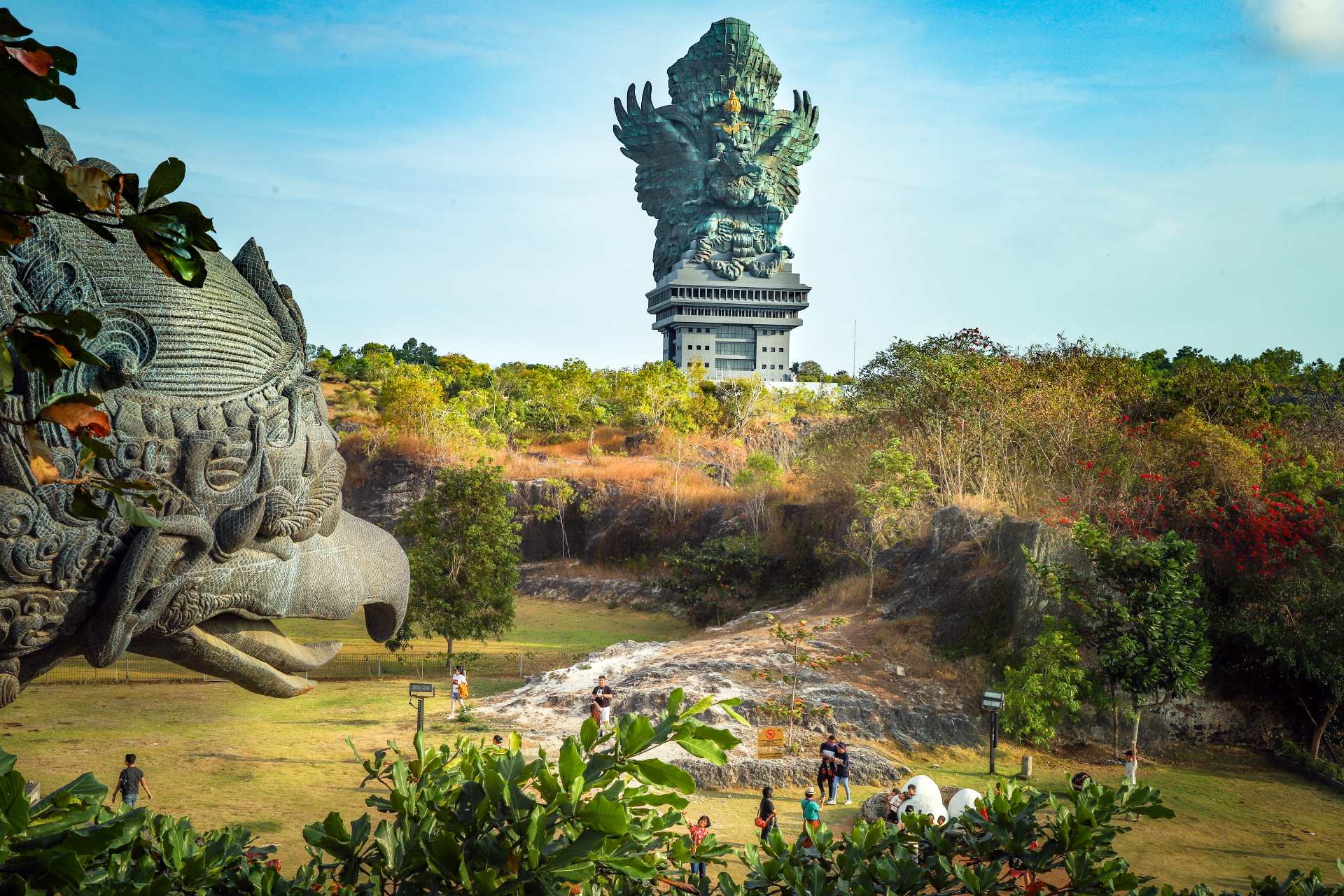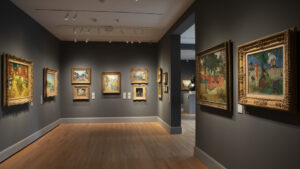Exploring GWK Cultural Park: A Unique Destination in Bali
6 min read
GWK Cultural Park
Contents
GWK Cultural Park, located in Bali, Indonesia, stands as a testament to the island’s rich cultural heritage and artistic expression. This article delves into the fascinating attractions and experiences that await visitors at this iconic destination.

Introduction to GWK Cultural Park:
- Cultural Showcase: GWK Cultural Park serves as a hub for showcasing Balinese culture, art, and spirituality, providing visitors with a comprehensive understanding of the island’s traditions and customs.
- Iconic Landmark: At the heart of the park stands the Garuda Wisnu Kencana (GWK) statue, a colossal monument depicting the Hindu god Vishnu riding the mythical bird Garuda, symbolizing Indonesia’s cultural identity and spiritual values.
Attractions and Highlights:
- Garuda Wisnu Kencana Statue: Towering over 120 meters above the ground, the GWK statue is a monumental masterpiece crafted by renowned Balinese sculptor Nyoman Nuarta. Visitors can marvel at its grandeur and intricate details up close.
- Cultural Performances: GWK Cultural Park hosts regular cultural performances, including traditional Balinese dances, music, and rituals, providing visitors with an immersive experience of Balinese art and performance.
- Exhibition Spaces: The park features exhibition spaces and galleries showcasing Balinese art, sculpture, and craftsmanship, offering insight into the island’s rich artistic heritage and contemporary creative scene.
- Lotus Pond: The serene Lotus Pond serves as a tranquil setting for reflection and relaxation, surrounded by lush greenery and offering picturesque views of the GWK statue and the surrounding landscape.
Activities and Experiences:
- Cultural Workshops: Visitors can participate in hands-on workshops and demonstrations, including traditional Balinese dance, music, and craft-making, allowing them to immerse themselves in the island’s cultural traditions.
- Adventure Park: For thrill-seekers, GWK Cultural Park offers an adventure park featuring adrenaline-pumping activities such as zip-lining, rock climbing, and aerial rope courses, providing fun and excitement for visitors of all ages.
- Culinary Delights: The park boasts a variety of dining options, ranging from casual eateries serving local Balinese cuisine to upscale restaurants offering panoramic views of the surrounding landscape, allowing visitors to savor the flavors of Bali.
Conclusion:
GWK Cultural Park stands as a cultural oasis in Bali, where visitors can immerse themselves in the island’s rich artistic heritage, spiritual traditions, and natural beauty. Whether marveling at the majestic GWK statue, enjoying traditional performances, or embarking on adventurous activities, a visit to GWK Cultural Park promises an unforgettable experience that celebrates the essence of Bali’s culture and identity.
Pros and Cons of GWK Cultural Park: Exploring Bali’s Iconic Destination
GWK Cultural Park in Bali, Indonesia, offers visitors a unique blend of cultural experiences, artistic expression, and natural beauty. However, like any tourist destination, it has its own set of advantages and disadvantages. Let’s delve into the pros and cons of visiting GWK Cultural Park:

Pros:
- Cultural Showcase: GWK Cultural Park provides a comprehensive overview of Balinese culture, art, and spirituality, making it an educational and enriching experience for visitors.
- Iconic Landmark: The centerpiece of the park, the Garuda Wisnu Kencana (GWK) statue, is a monumental masterpiece that symbolizes Indonesia’s cultural identity and spiritual values, offering visitors a unique photo opportunity.
- Spectacular Views: The park’s elevated location offers panoramic views of Bali’s lush landscapes and coastline, providing visitors with breathtaking vistas and unforgettable photo opportunities.
- Artistic Exhibitions: GWK Cultural Park features galleries and exhibition spaces showcasing Balinese art, sculpture, and craftsmanship, allowing visitors to appreciate the island’s rich artistic heritage and contemporary creative scene.
- Cultural Performances: Regular performances of traditional Balinese dances, music, and rituals provide visitors with an immersive experience of Balinese culture and entertainment.
Cons:
- Entrance Fees: The cost of admission to GWK Cultural Park can be relatively high compared to other tourist attractions in Bali, which may deter budget-conscious travelers.
- Crowds: During peak tourist seasons, the park can become crowded with visitors, leading to long queues, limited seating at restaurants, and difficulty finding parking spaces.
- Limited Shade: The park’s open-air layout means that there is limited shade available, making it uncomfortable for visitors to explore under the hot sun, especially during the midday hours.
- Commercialization: Some visitors may find the commercialization of certain aspects of the park, such as souvenir shops and food stalls, detracts from the authenticity of the cultural experience.
- Accessibility: GWK Cultural Park’s location on the southern tip of Bali may make it less accessible for visitors staying in other parts of the island, requiring a longer commute to reach the park.
Conclusion:
While GWK Cultural Park offers a captivating blend of cultural immersion, artistic expression, and natural beauty, it’s essential to consider both the pros and cons before planning a visit. Whether you’re drawn to the park’s iconic landmarks, cultural performances, or panoramic views, a trip to GWK Cultural Park promises a memorable experience that celebrates the essence of Bali’s culture and identity.
The Visionary Behind GWK Cultural Park: Unveiling the Designer
GWK Cultural Park in Bali, Indonesia, stands as a testament to the island’s rich cultural heritage and artistic expression. The park’s conception and design are attributed to one visionary individual who sought to create an iconic landmark that celebrates Balinese culture and spirituality.

The Architectural Genius:
I Nyoman Nuarta: The mastermind behind the design of GWK Cultural Park is the acclaimed Balinese sculptor and artist, I Nyoman Nuarta.
Born in Tabanan, Bali, Nuarta is renowned for his monumental sculptures and contributions to the art world.
- Nuarta’s Vision: Cultural Preservation: Nuarta envisioned GWK Cultural Park as a means of preserving and promoting Balinese culture, art, and spirituality for future generations. His design incorporates elements of Hindu mythology, Balinese architecture, and contemporary artistic expression.
- Symbolism: The centerpiece of the park, the Garuda Wisnu Kencana (GWK) statue, is a symbol of Indonesia’s cultural identity and spiritual values. Depicting the Hindu god Vishnu riding the mythical bird Garuda, the statue embodies themes of power, protection, and divine grace.
- Artistic Expression: Nuarta’s design reflects his unique artistic style, characterized by intricate details, dynamic forms, and a deep reverence for Balinese tradition. His sculptures blend traditional craftsmanship with modern techniques, creating a timeless aesthetic that resonates with visitors.
The Creation Process:
- Collaborative Effort: Bringing Nuarta’s vision to life required a collaborative effort involving architects, engineers, and skilled artisans. Together, they translated his artistic concepts into tangible structures and sculptures that adorn the park.
- Meticulous Planning: Nuarta and his team meticulously planned every aspect of the park’s design, from the layout of the statues and exhibition spaces to the landscaping and infrastructure, ensuring a harmonious integration of art, nature, and culture.
Legacy and Impact:
- Cultural Landmark: GWK Cultural Park has become a cultural landmark in Bali, attracting visitors from around the world who come to marvel at Nuarta’s monumental sculptures, experience traditional performances, and immerse themselves in Balinese culture.
- Inspiration for Future Generations: Nuarta’s legacy extends beyond his artistic achievements; he has inspired a new generation of artists and cultural enthusiasts to embrace and celebrate the rich tapestry of Balinese heritage situs slot terbesar.
Conclusion:
I Nyoman Nuarta’s visionary design and artistic prowess have left an indelible mark on GWK Cultural Park, transforming it into a vibrant cultural hub that celebrates the essence of Balinese identity. His dedication to preserving and promoting Balinese culture through art and sculpture ensures that GWK Cultural Park will continue to inspire and captivate visitors for generations to come.
Read More Article About “American Express Advantage: Unlock Financial Freedom“







